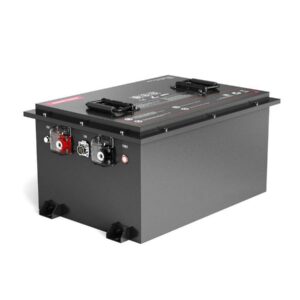
Can you jump a diesel battery?
Yes, you can jump-start a diesel vehicle’s battery using standard procedures, but critical adjustments are required due to diesel engines’ higher compression ratios and electrical demands. Unlike gasoline engines, diesel starters often require stronger current delivery—ensure donor vehicles (preferably another diesel) or jump starters provide 600+ cold cranking amps (CCA). Always connect batteries in parallel (positive to positive, negative to chassis ground) to avoid voltage spikes damaging ECUs.
How to Safely Dispose of and Recycle Car Batteries
What distinguishes diesel battery jump-starting from gasoline vehicles?
Diesel batteries demand higher cranking amperage (typically 800-1500 CCA vs. 400-600 CCA for gasoline) due to compression ignition systems. Pro Tip: Use 4-gauge or thicker jumper cables—thinner wires overheat under 200A+ loads common in diesel startups.

Beyond basic connections, diesel engines require sustained cranking to build sufficient heat for ignition. For example, a 6.7L Power Stroke diesel might need 10-15 seconds of continuous cranking versus 3-5 seconds for a gasoline V8. Transitionally, this extended load tests both the dead battery’s residual capacity and the donor system’s alternator output. Warning: Repeated failed attempts may drain the donor vehicle’s battery, especially if it’s a smaller gasoline model. A practical analogy? Jump-starting a diesel resembles reviving a commercial freezer truck—you need industrial-grade power sources rather than standard passenger car resources.
Can gasoline vehicles safely jump-start diesel trucks?
Technically possible but risk-intensive—gasoline alternators often lack capacity to recharge diesel-sized batteries. Deep Dive: Most diesel trucks use 31-series batteries (75-100Ah) versus gasoline vehicles’ 24/27-series (45-70Ah). When a Ford F-150 (gas) jump-starts a Ram 2500 (diesel), the donor’s 150A alternator struggles to supply both vehicles’ electrical systems and recharge the Ram’s depleted 95Ah battery. Pro Tip: Keep donor engines at 1,500-2,000 RPM during the process to maximize alternator output. But what if the diesel’s battery is below 10V? At that point, professional jump-starters with 12V/24V boost modes are safer alternatives.
| Factor | Gasoline Donor | Diesel Donor |
|---|---|---|
| Alternator Output | 90-150A | 220-400A |
| Recommended Cable Gauge | 6-8 AWG | 2-4 AWG |
Battery Expert Insight
FAQs
How long should you charge a diesel battery before jump-starting?
Charge for 30+ minutes via donor vehicle at 2,000 RPM—diesel batteries need 12.4V minimum to avoid ECU errors during cranking.
Can jump-starting damage diesel turbo systems?
No direct mechanical risk, but repeated low-voltage cranking starves turbo oil pumps. Always resolve underlying charging issues promptly.
